.jpeg)
SLOTS: Slots in motherboards are connecting interfaces on which internal devices are connected, it means the devices are connected inside the CPU on top of the motherboard.
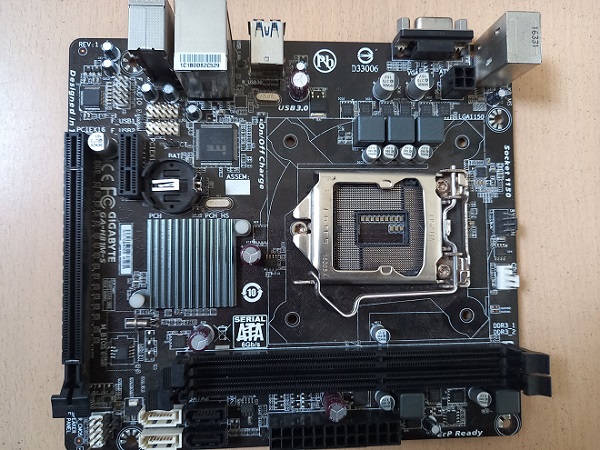
Suppose we have a motherboard and from the beginning, we have to connect all the peripherals on it so let us know about all the slots one by one
1. ATX (Advanced Technology Extended):
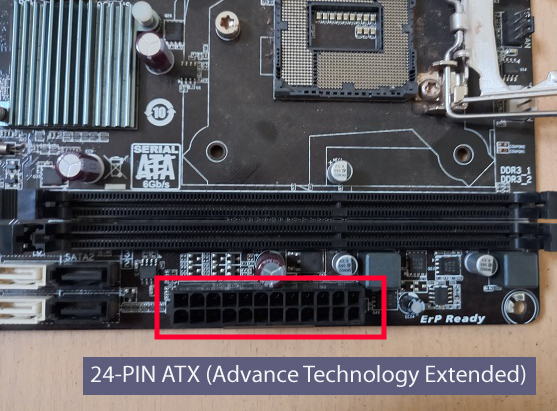
It is of 24 pins, on which our SMPS (Switch mode power supply which converts AC into DC and supplies power to the motherboard) is connected. From the ATX slot, 3-volt, 5-volts, and 12-volt power is supplied to the motherboard
2. SATA (serial advanced technology attachment):
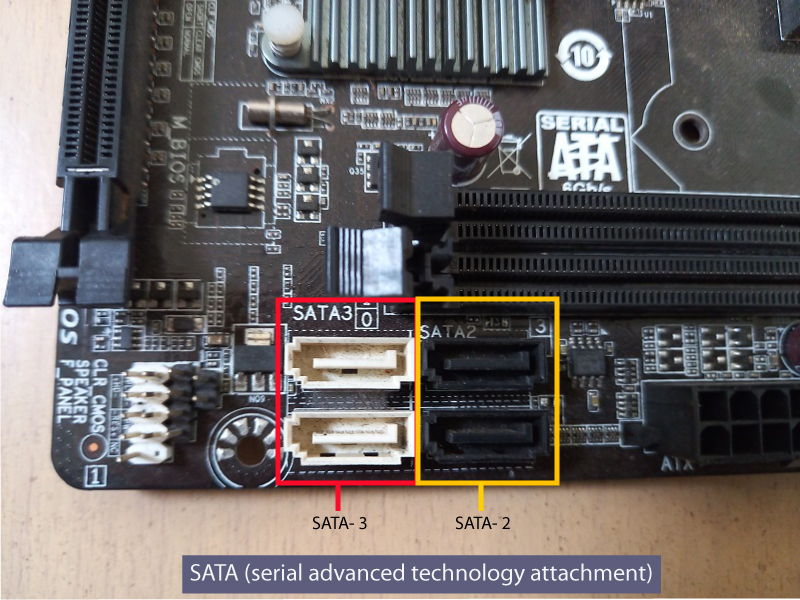
In the SATA slot, our hard drive is connected to the motherboard with the help of a serial SATA cable
There are three types of SATA slots in the motherboard
1. SATA 1 speed 1.5GB/second
2. SATA 2 speed 3GB/second
3. SATA 3 speed 6GB/second
If our hard drive supports 3GB/sec then it should be connected to SATA 2 where its speed is also 3GB/sec this way our hard drive will work at full capacity.
Nowadays only SATA 2 and SATA 3 are found in modern motherboards. SATA 3 generally is used to connect SSD memory.
3. IDE (Integrated Drive Electronics): This is the slot where the hard disk is connected to the motherboard, the same as the SATA slot.
this was used before the SATA slot like in the Pentium computer series.in this technology data transfer is very less than SATA
To the connect the hard disk to the motherboard with IDE, our hard drive must have an IDE interface. in the modern motherboard, SATA has been replaced with IDE completely
4. RAM: Ram is installed on this slot.RAM slots are designed for specific DDR-type RAM series. it Supports only one DDR1, DDR2, DDR3, DDR4 RAM
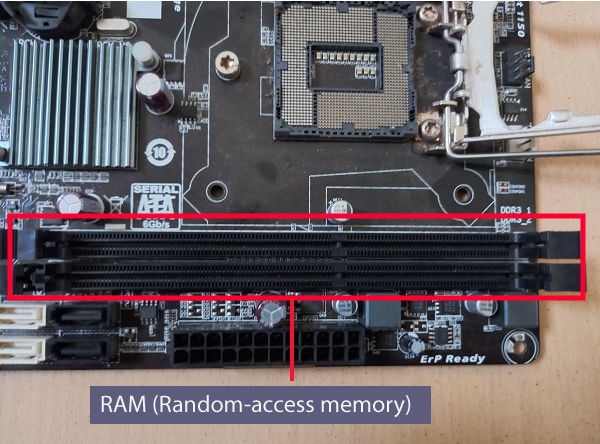
Q. How to Identify the DDR Type of RAM Slot?
Ans: A voltage is written on the notch of the RAM slot where the voltage value is different for each DDR type. see in picture
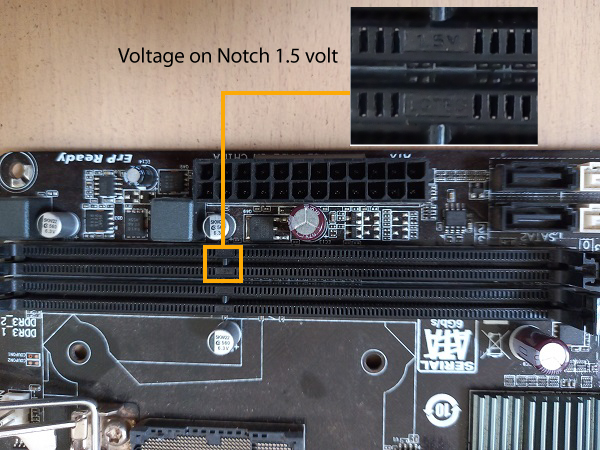
| Slot Type | Voltage(v) |
|---|---|
| DDR1 | 2.5 v |
| DDR2 | 1.8 v |
| DDR3 | 1.5 v |
| DDR4 | 1.2 v |
For example: If the voltage on the notch is 1.5v then our ram slot design for DDR3.
5. AGP / PCI / PCI Express: These are three different types of slots, used to connect external peripheral devices. There is a lot of confusion between AGP, PCI, and PCI Express. If they all work the same i.e. connecting for external peripheral devices, then why are there three different slot types so let's discuss it.
AGP (accelerated graphics port): This slot is used to install the graphics card. When we work with high-resolution like playing games, video mixing, graphics designing, or bitcoin/Ethereum mining, etc. default graphics card can't handle it and our screen doesn't work smoothly so we need an external graphics card and that graphics card connects to AGP, but it has older technology, and this slot works slowly AGP is Removed in modern computer motherboards and replaced by PCI Express (PCIe).
PCI (Peripheral Component Interconnect): This is a 32-bit 3-volt or 32-bit 5-volt 124-pin slot that is controlled by the southbridge. It is used to connect external peripheral cards, such as LAN cards, audio cards, USB cards, VGA cards, TV Tuner cards, etc. Suppose a computer has four USB ports and we need more then we can easily expand by adding an external USB card on the PCI slot.
PCI slot was first introduced in 1992 as PCI 1.0 and PCI 3.0 in 2004. From 2004 to now generally, motherboards come with PCI 3.0
Parallel data transfer is used for data communication in PCI, so its speed is less than PCI Express. This is out of date and on modern motherboards either only one PCI slot can be found or it has been completely replaced by PCI Express. But in some older motherboards, you can see two PCI slots and one PCI Express.
PCIe(Peripheral Component Interconnect Express):
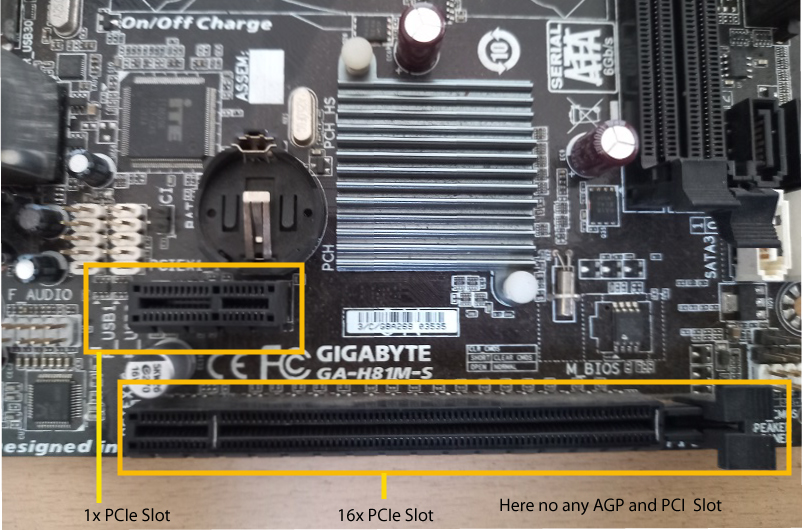
So from reading above you can see that AGP is only for graphics cards which are very slow and PCI is for peripheral cards which are also slow and do not compete in the modern digital world where speed matters a lot. To overcome this problem a new slot has been introduced i.e. PCI Express (PCIe) which has replaced both PCI and AGP.
PCI Express comes with five versions as well as four X-Type configurations where each version and X-config has a different speed.
Motherboards may have 1x PCIe, 2x PCIe, 4x PCIe, 8x PCIe, and 16x PCIe slots available, but most of them are 1x and 16x.
PCI output Speed: In the table below, you can see that as the version and x type of configuration increase, the data speed output also increases.
| Version | 1x PCIe | 2x PCIe | 4x PCIe | 8x PCIe | 16x PCIe |
|---|---|---|---|---|---|
| 1.0 | 250 MB/s | 0.5 GB/s | 1.0 GB/s | 2.0 GB/s | 4.0 GB/s |
| 2.0 | 500 MB/s | 1 GB/s | 2.0 GB/s | 4.0 GB/s | 8.0 GB/s |
| 3.0 | 984.6MB/s | 1.97 GB/s | 3.94 GB/s | 7.88 GB/s | 15.8 GB/s |
| 4.0 | 1969 MB/s | 3.94 GB/s | 7.88 GB/s | 15.75 GB/s | 31.5 GB/s |
| 5.0 | 3938 MB/s | 7.88 GB/s | 15.75 GB/s | 31.5 GB/s | 63.0 GB/s |
Since audio cards for small peripherals like video cards, LAN cards don't have much speed, so they come with 1x PCI pin slots, whereas in the case of graphics cards, higher speeds are required, so for PCIe, they Come with 16x PCI Express slot.
AGP Vs PCI Vs PCI Express:
| Slot Type | Peripheral install | Data Transfer Speed (version 3.0) |
|---|---|---|
| AGP | Graphics Card | -- |
| PCI | LAN cards, audio cards, USB cards, VGA cards, TV Tuner cards, | Up to 266.64 MB/s |
| PCI Express | Graphics Card and LAN cards, audio cards, USB cards, VGA cards, TV Tuner cards, | Up to 15.8 GB/s |
Port: Ports in the motherboard are connecting interfaces to which external peripheral devices such as a monitor, mouse, keyboard, and printer are connected. External peripherals mean that the devices are connected outside the CPU. The following ports are available in the motherboard.
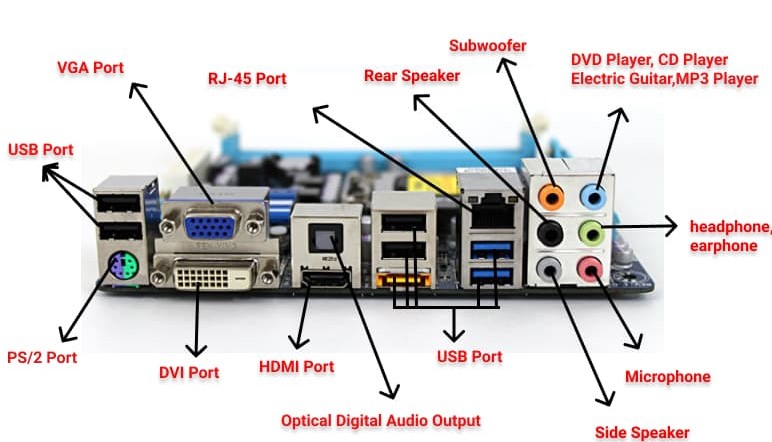
VGA (Visual Graphic Array):

This port gives visuals so here is our monitors or projectors are connected. It has some limitations like
1. From this port only video can transmit not audio.
2. Do not support high-resolution video.
So, VGA is largely replaced by HDMI Ports but it could be found in older PC or laptops.
HDMI (High-Definition Multimedia Interface):

HDMI port is used for connecting monitors, and projectors, like VGA but the basic difference is VGA supports low-resolution video only while HDMI supports both, audio and video with high resolution.
USB (Universal Serial Bus): This is the standard interface in the motherboard, which is used for connecting the keyboard.Mouse, Printer, Pendrive, etc.
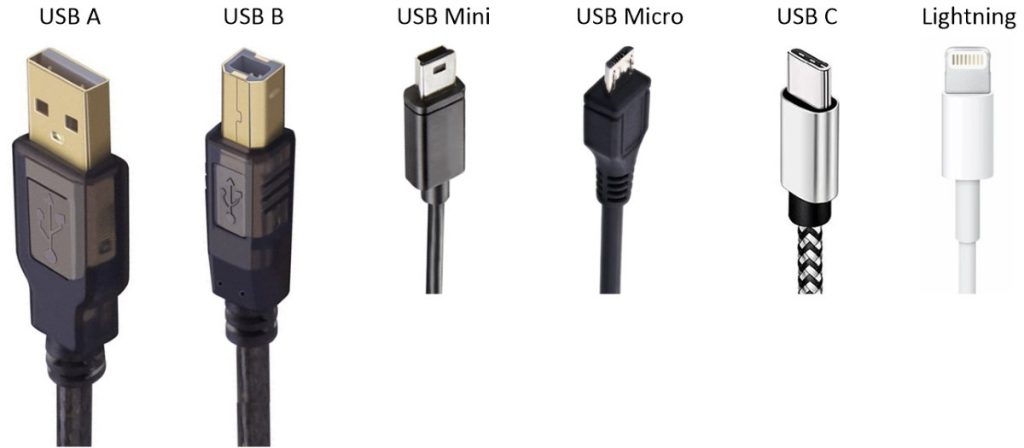
it has been categorized into various types USB Type-A, USB Type-B, USB Type-C, and USB Micro.
USB Type-A has given in the motherboard, USB Type-B in printers, and USB Type-C in smartphone